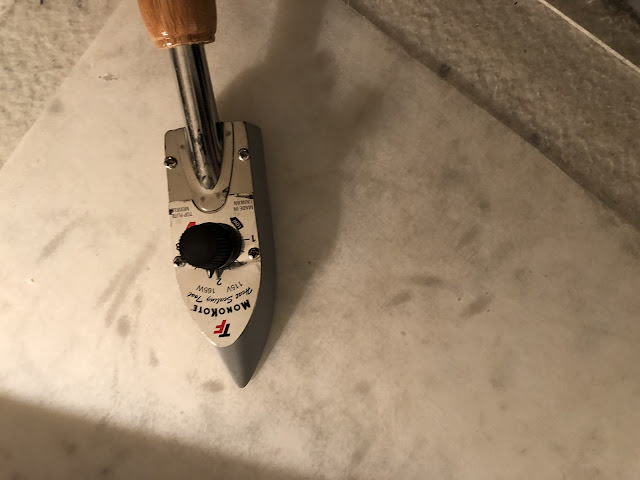I was offered an opportunity to show my works at a gallery recently. This was going to be a solo exhibition with 28 of my works.
In the past when I was designing the exhibitions I felt more at ease because the venues were more informal and the personnel involved were all personal friends of mine and they knew my works. I felt that there was a lot of unspoken communications and still we were on the same page. I was able to get my ideas across with simple diagrams and everybody understood their roles instinctively.
Inkflow is the app on my iPad that have served me well over the years; for all the exhibitions that I've been involved in. I could snap a picture of the venue and make free hand written notes on the picture.
I could upload a picture of the venue and plan my layout off the picture. For that to work, I needed to be familiar with the size and dimension of the proposed pieces, so that I could draw them in place and get an idea of how it could pan out.
Or I could draw the size of my walls free hand and upload the proposed pieces and shrink them to size and see how they would look on the wall. Again, having an intimate knowledge of the pieces is vital, since I had to shrink the pictures down free hand, not to exact scale, thus not achieving the exact relative dimensions to the display wall. I needed to know how many of such pieces could potentially fit on the walls; either by measurement of the pieces, or by eyeballing the measurements. Nonetheless this was a fast and sure way of checking out an idea.
For this exhibition I had to be a little more structured. I was working with people I've never met before and they had absolutely no idea of what my pieces were like, other than the thumbnails I provided them with. I wasn't sure that my haphazard road map would not make too much sense to who I considered strangers basically. I needed to draw up a schematic. This reminded me of the days when I was a working pharmacist and I had to set up merchandise shelves on the sales floor. The exact location of each medication and appliance with their dimensions were all spelled out in no uncertain terms. Fortunately the schematic was done by the cooperate office and my job simply was to set them up accordingly.
Thus the schematic I created was to scale. I used graphing paper for my floor map and cut-out pieces of my paintings. This was the master plan that everybody involved with the installation would be following.
I had included a few pieces of works that are not framed but in the un-mounted state. I also included my wet-mounting board with a mounted painting still on it. I wanted to introduce the audience to the kinds of Xuan paper I used and how a painting comes from being painted to ready for framing. For these un-framed pieces I was introduced to push pins with magnets. The magnets hold the paper on the push pins and keep the paintings on the wall without sticking holes in them. Sweet! I found my new toy!!
I placed all my zodiac pieces framed in red on the wall across from the entry, such that people can see them through the grated doors even when the gallery is not open. Also I think the vibrant color helps to draw in a casual audience.

I had all my monochromatic float pieces, (my Sulio Xuan Ban pieces) on one wall, as a suite.
My large pieces on one wall.
The installation went off like clockwork and was finished in no time. The exhibition was well received, obviously I was elated.
I am very thankful!













































